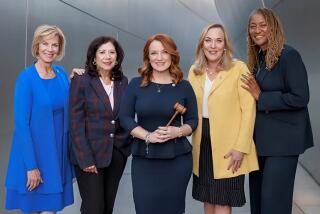L.A COUNTY FAIR TIMELINE
Highlights of the L.A. County Fair over the last 75 years, from its ambitious beginnings in 1922 to the present.
1922: A dozen businessmen organize a county fair; the city of Pomona agrees to purchase a 43-acre beet and barley field for the event. The “Los Angeles County Fair” name is registered in Sacramento, and reluctantly, the L.A. County Board of Supervisors appropriates $10,000 to the cause. Harness racing, chariot races and an airplane wing-walking exhibition are highlights of the first year. The inaugural L.A. County Fair opens on Oct. 17, 1922, drawing 49,461 people.
1923: The success of the first fair encourages the organizer and permanent buildings are built; an additional 62 acres are purchased.
1925: The fair is held in September instead of October, and attendance tops the 100,000 mark.
1930: Dubbed the “largest exhibit building in the world,” the Palace of Agriculture opens. Attendance is 265,213.
1932: A tri-county fair is held, involving Orange, Riverside and Los Angeles counties. It remains a tri-county event through 1937.
1933: Parimutuel wagering is legalized in California and introduced at the fair. Attendance reaches 334,759.
1935: The wine competition begins (and today is the longest-running county fair competition).
1941: On Dec. 14, just a week after Pearl Harbor, three U.S. Army regiments occupy the grounds as the first units arrive for war duty.
1942: World War II brings a halt to the fair for six years, as the U.S. Army sets up house. More than 5,400 Japanese are housed temporarily in 420 prefabricated buildings, on their way to relocation camps.
1945: The facility becomes a camp for German and Italian prisoners of war.
1948: The fair reopens with a $2-million construction and reconditioning program. The Fair Assn. and county of Los Angeles sign a 49-year lease. The agricultural pavilion (today known as Fairplex 4), designed by Peter Ficker, becomes the largest structure of its kind west of the Mississippi. Attendance tops 1 million, making the event the second-largest fair in the United States. The L.A. County Fair has topped the 1-million mark in 48 of the last 49 years.
1949: Ganesha Boulevard (now known as Fairplex Drive) is constructed, linking Fairplex to the San Bernardino Freeway.
1951: The world’s largest man-made ski jump is created with artificial snow, featuring Olympic hopefuls preparing for the 1952 Olympics in Oslo.
1952: The landmark clock tower is constructed, along with the fair’s Mexican Village.
1962: A mile-long monorail circling the grounds begins operation. Storybook Farm, now known as Heritage Farm, is added.
1964: The clubhouse section is added to the racetrack grandstand, providing indoor dining and outdoor terraced seating.
1965: Golden Empire Mine, a replica of the original Empire Gold Mine that operated in Grass Valley from 1850 to 1956, opens and immediately becomes a popular fair attraction.
1984: The name of the fairgrounds is changed to Fairplex to encourage year-round use.
1986: The racetrack is renamed Fairplex Park and lights are added.
1993: The landmark sky ride is installed.
1996: A 90-foot-high Fairplex electronic sign is installed along the San Bernardino Freeway. Nightly grandstand entertainment returns to the fair for the first time since 1983. The landmark monorail ride and its station are removed. The Mexican Village is renovated and renamed Fiesta Village.
1997: UFOs land at the L.A. County Fair.
More to Read
Sign up for Essential California
The most important California stories and recommendations in your inbox every morning.
You may occasionally receive promotional content from the Los Angeles Times.










